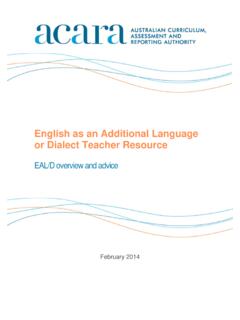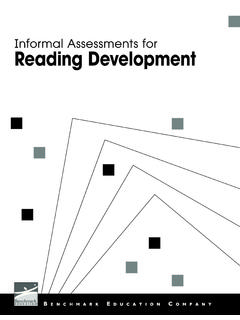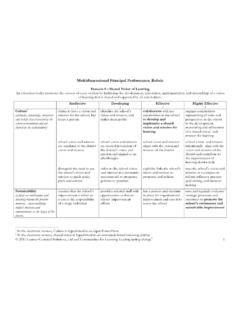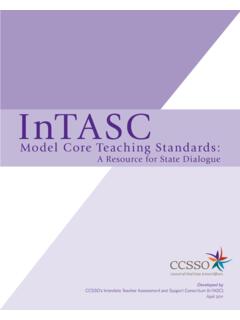Transcription of Exploring Culturally Responsive Pedagogy: Teachers ...
1 Exploring Culturally Responsive pedagogy : Teachers Perspectives on Fostering Equitable and Inclusive Classrooms Amy J. Samuels University of Montevallo This article examines perspectives of in-service Teachers related to Culturally Responsive pedagogy and possible strategies for employing the framework in the K-12 setting. Benefits and barriers to facilitating a Culturally Responsive framework are explored, as well as approaches and pedagogical tools for fostering equitable and inclusive classrooms.
2 Based on the findings, I posit the value of creating spaces for Teachers to be reflective in their practice, as well as examine their own biases, to cultivate Culturally Responsive approaches to teaching and learning. Introduction onsidering the current social climate and the politically-charged atmosphere in the nation, many Teachers are aching to figure out how to talk about current events and issues related to diversity in their classrooms. However, many educators do not approach related issues and report such learning was minimal in their educational training (Darling-Hammond, 2010; Gay, 2010; Ladson-Billings, 2000).
3 Research conducted with pre-service Teachers found students knowledge of diverse cultures was marginal (Davis, 2008; Ladson-Billings, 2000) and reveals both in-service and experienced educators often employ a pervasive deficit paradigm and blame students and their families for lower academic achievement and perceived inadequacies (Darling-Hammond, 2010; Ladson-Billings, 2000; McKenzie, 2001). Consequently, there is often a cultural disconnect between Teachers and their students (McKoy, MacLeod, Walter, & Nolker, 2017).
4 As such, when working to advance educator preparation and better equip the next generation of Teachers to advocate for educational equity, teacher educators and preparation programs must commit to fostering learning that examines how to meet the social and academic needs of diverse student populations. Teachers must develop a knowledge and appreciation of diverse cultures, explore how equitable and inclusive practices can be implemented in schools, and imagine strategies for challenging existing barriers.
5 Furthermore, Teachers must have the opportunity to understand their evolving identities and how they influence (in)action, counter or perpetuate biases or deficit paradigms, and expose or ignore injustices. When Teachers are provided opportunities and spaces to be reflective, interrogate their assumptions, and investigate the realities of their biases, they are better prepared to consider how to promote equitable and inclusive classrooms and better positioned to be agents of change.
6 To explore strategies in educator preparation that foster teacher voice, my study was designed to examine Teachers perspectives related to Culturally Responsive pedagogy and possible strategies for employing the framework in the K-12 setting. Culturally Responsive pedagogy Culture is central to how all learning takes place (Gay, 2010). Culturally Responsive pedagogy is a student-centered approach to teaching that includes cultural references and recognizes the importance of C SRATE JournalWinter 2018/Volume 27(1)22students cultural backgrounds and experiences in all aspects of learning (Ladson-Billings, 1995).
7 The approach is meant to promote engagement, enrichment, and achievement of all students by embracing a wealth of diversity, identifying and nurturing students cultural strengths, and validating students lived experiences and their place in the world (Villegas & Lucas, 2007). Culturally Responsive pedagogy is characterized by Teachers who are committed to cultural competence, establish high expectations, and position themselves as both facilitators and learners.
8 Overview of the Study This qualitative study sought to explore perceptions on Culturally Responsive teaching of K-12 in-service Teachers serving in low socioeconomic schools in a large urban school district in the southeast region of the United States. I collected data from approximately 200 Teachers over a four-month period. Participants engaged in small focus groups of four to five to explore characteristics of Culturally Responsive teaching as highlighted by Villegas and Lucas (2007): (1) understanding how learners construct knowledge, (2) learning about students lives, (3) being socio- Culturally conscious, (4) holding affirming views about diversity, (5) using diverse instructional strategies, and (6) advocating for all students.
9 The purpose of the research was two-fold. While my primary goal was to contribute and inspire increased dialogue related to perspectives of Culturally Responsive teaching of currently practicing Teachers , the secondary aim was to create spaces for education professionals to engage in discussion regarding how to best foster this framework in the K-12 context. Teachers volunteered to attend a six-hour professional development session divided into two three-hour sessions.
10 The primary purpose of the first session was for Teachers to build a foundational understanding of cultural responsiveness and related components. The facilitator led participants through a thorough presentation about cultural responsiveness as both a theoretical framework and a pedagogical practice. While there are strategies and teaching approaches aligned with cultural responsiveness, the facilitator emphasized the need for practitioners to view this approach as an attitude that becomes part of the classroom climate and culture.















